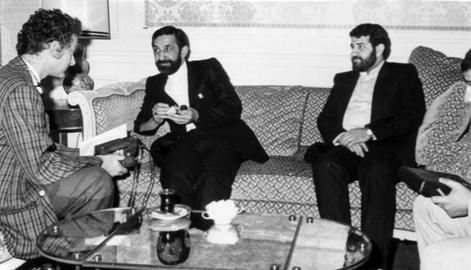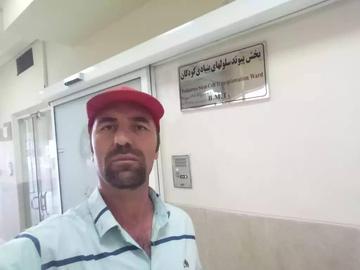“Until a few days ago I believed in the same declared manner of defense and positions in the war and believed that they would serve the interests of the regime, the country and the revolution. After listening to all the high-ranking political and military experts whose commitment, benevolence and honesty I trust, I agreed to the [UN] resolution and the ceasefire”
- Ayatollah Ruhollah Khomeini’s message accepting a ceasefire with Iraq, 1988
Iran declared a ceasefire with Iraq in 1988, putting an end to a devastating eight-year war. But the way in which it did it — by accepting the UN Security Council’s Resolution 598 — was one of the most amateurish actions it took over that wartime period, resulting in terrible consequences for Iran.
Prior to Ayatollah Khomeini’s acceptance of the resolution, he had decided to continue pursuing the war with Iraq. Both he and senior Iranian officials had consistently repeated that this was the Islamic Republic’s stance on the conflict. But then, late on July 17, 1988, the letter of acceptance, signed by then-President Ali Khamenei, was delivered to the UN Secretary General Javier Perez de Cuellar at his residence in New York. Iranian Foreign Minister Ali Akbar Velayati expressed the feelings of many when he said that the news caught the world by surprise.
After accepting Resolution 598, Ayatollah Khomeini explained his reasons in a letter addressed to Iran’s high government officials, Friday Imams, the representatives of the parliament and the Assembly of Experts. At 2pm on July 20, Tehran radio broadcast the news and read out the statement, which has come to be known as the “poisoned chalice” letter. “Taking this decision is more deadly than drinking from a poisoned chalice,” Khomeini said in his message.
Public opinion took this news to mean an immediate end to the war, and yet this interpretation cost the Iranian military dearly. On the frontlines, Iranian troops, exhausted by eight years of war that showed no clear sign of victory, interpreted the acceptance of Resolution 598 as an immediate ceasefire and retreated from their forward positions. “The units stationed on the defense line thought it was a ceasefire and laid down their guns,” says General Hossein Hasani Saadi, the commander of the army’s ground force at the time and the current deputy commander of the Khatam-al Anbiya Construction Headquarters. “Iraq used this opportunity and attacked.”
“We Made a Mistake!”
The Iraq attack took place before the two countries had agreed on a date and a time to start the ceasefire and, as a result, the Iraqis occupied new territory inside Iran. “We made a mistake,” says General Saadi.
Three days after Iran accepted the resolution and following the retreat of some Iranian troops from their positions, the Iraqi army crossed the Khuzestan border, advanced toward its capital Ahvaz and laid siege to the port city of Khorramshahr for a second time during the war. A number of commanders, including the top commander of the main division confronting the Iraqis, were in Isfahan instead of at their posts at the front. Local forces sent immediate pleas to high-ranking commanders and the Iranian people to confront the Iraqi forward movement.
“This is the vital juncture for Muslims and the infidels,” Ayatollah Khamenei said in a message to the Revolutionary Guards commanders, “meaning that either Muslims win or the infidels. You must fight for every meter and no excuse is accepted from anybody. This is the point that either brings the Guards alive or leaves them dead and abject forever.”
On July 23, 1988, the Iraqi army invaded the western province of Ilam and, through its occupation of the Maymac Heights, reached within 30km of the provincial capital, deep inside Iranian territory. A day later, on July 24, Iraqi forces attacked the province of Kermanshah. According to Jafar Shiralinia, a historian of the war, Iranian commanders did not take Iraqi attacks seriously and even ordered some military units to retreat so that there would be no prisoners of war. And a day later, with Iraqi military support, fighters from the opposition People’s Mojahedin Organization (MEK) group entered Iran through the Khosravi Border Crossing and advanced to Sarpol Zahab inside Kermanshah.
As a result of this misinterpretation and the unprofessional handling of the ceasefire, Iran lost more territory than it had before accepting Resolution 598 and suffered unexpected losses. On July 24, with the losses mounting, Ayatollah Khomeini ordered Ali Razini, head of the armed forces’ judiciary, to create a “special war tribunal,” ordering this court to try all offenders in war zones and, with disregard for superfluous rules, put to death anybody who had caused the loss of life or defeat.
Saving Delinquent Generals
In his memoirs, the late former president Akbar Hashemi Rafsanjani, who was Deputy Commander-in-Chief during the war with Iraq, writes that he saved the Revolutionary Guards’ General Yahya Rahim Safavi, who later became the commander-in-chief of the Guards, from possible execution. Another person who Rafsanjani claims to have saved from the special war tribunal was General Ahmad Vahidi, who President Mahmoud Ahmadinejad later appointed as his minister of defense.
On July 24, 1988, at the same time of the establishment of the war tribunal and the People’s Mojahedin’s attack on Kermanshah, Foreign Minister Ali Akbar Velayati departed for New York to start negotiations for a ceasefire. The first meeting between the Iranian foreign minister and the rotating president of the UN Security Council took place on July 26 in New York.
Negotiations to set a date for the ceasefire lasted for three weeks and, in the meantime, Iraq continued its offensive inside Iran. According to military sources, on one single occasion the Iraqis took 600 Iranian soldiers prisoner. Iraq also used chemical weapons, including a chemical attack on civilians in the West Azerbaijani city of Oshnavieh.
Finally, on August 8, the UN Security Council met to decide the issue of a ceasefire between Iran and Iraq. Present at the meeting were Mohammad Jafar Mahallati, Iran’s permanent representative to the United Nations, and his Iraqi counterpart Ismat Taha Kittani. The UN Secretary General Javier Perez de Cuellar asked both sides to observe a ceasefire on all fronts starting at 3am on August 20,1988, and the rotating president of the Security Council announced that all members of the council were in agreement on the date. It was also agreed that peace negotiations would start on August 25 in Geneva and the two sides were asked to avoid hostilities before then.
In a letter to the UN secretary general on the same day, the Islamic Republic officially accepted the arrangement, but the peace talks in Geneva led nowhere. More than 31 years after the end of the war, Iran and Iraq have yet to sign a peace treaty and officially the situation between the two countries remains a “ceasefire.” The question of war reparations is fading and even certain provisions of the Security Council’s resolution remain unfulfilled.
Despite Iraq’s agreement with the ceasefire, and its agreement to revert to international borders and repatriate prisoners of war, for two more years parts of Iranian territory remained under Iraqi occupation and the issue of exchanging prisoners of war remained unresolved. It was only a few days before the Iraqi invasion and occupation of Kuwait that, on August 14, 1990, Saddam Hussein wrote an open letter to Iranian president Akbar Hashemi Rafsanjani and announced that Iraq would start evacuating Iranian territory and exchanging prisoners on August 17.
Iranian troops had imagined that the full implementation of the ceasefire and withdrawal to international borders would begin the moment the announcement came over the radio that Resolution 598 had been accepted. In reality, though, this process took two years and caused further damage and fatalities for Iran. A major cause of this, of course, was Iran’s clumsy and unprofessional behavior in the way it accepted the resolution and announced the ceasefire.
visit the accountability section
In this section of Iran Wire, you can contact the officials and launch your campaign for various problems



























comments